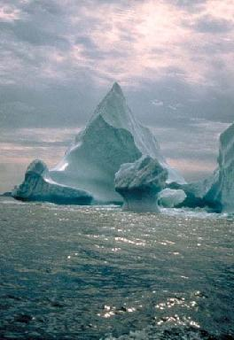NOAA/WDS Paleoclimatology - Eastern Equatorial Pacific Nitrogen Data during the mid-Pleistocene Transition
This archived Paleoclimatology Study is available from the NOAA National Centers for Environmental Information (NCEI), under the World Data Service (WDS) for Paleoclimatology. The associated NCEI study type is Paleoceanography. The data include parameters of paleoceanography with a geographic location of South Pacific Ocean. The time period coverage is from 1234770 to 59790 in calendar years before present (BP). See metadata information for parameter and study location details. Please cite this study when using the data.
- Cite as: Robinson, R.S. (2019-06-24): NOAA/WDS Paleoclimatology - Eastern Equatorial Pacific Nitrogen Data during the mid-Pleistocene Transition. [indicate subset used]. NOAA National Centers for Environmental Information. https://doi.org/10.25921/8d8r-3b15. Accessed [date].
- Please refer to Credit tab for full citation information.
- doi:10.25921/8d8r-3b15
- noaa-ocean-27050
- NCEI DSI 1200_02
- NCEI DSI 1200_01
noaa-ocean-27050
| Search Data |
|
| Download Data |
|
| Distribution Formats |
|
| Ordering Instructions | Contact NCEI for other distribution options and instructions. |
| Distributor | NOAA National Centers for Environmental Information
ncei.info@noaa.gov |
| Dataset Point of Contact | NOAA National Centers for Environmental Information
ncei.info@noaa.gov |
| Dataset Point of Contact | Data Center Contact
NOAA World Data Service for Paleoclimatology 828-271-4800 paleo@noaa.gov |
| Coverage Description | Date Range: 1234770 cal yr BP to 59790 cal yr BP; |
| Time Period | -1232820 to -57840 |
| Spatial Bounding Box Coordinates |
N: -3.095
S: -3.095
E: -90.81833
W: -90.81833
|
| Spatial Coverage Map | |
| General Documentation |
|
| Associated Resources |
|
| Publication Dates |
|
| Data Presentation Form | Digital table - digital representation of facts or figures systematically displayed, especially in columns
|
| Dataset Progress Status | Complete - production of the data has been completed |
| Data Update Frequency | Data update frequency not available |
| Supplemental Information |
STUDY NOTES: Measurement precision- %TN: 0.01%; d15N: 0.3 per mil. Provided Keywords: equatorial Pacific, upwelling, nitrogen isotopes, mid-Pleistocene transition
ABSTRACT SUPPLIED BY ORIGINATOR: The emergence of high-amplitude, low-frequency glacial-interglacial cycles during the mid-Pleistocene climate transition (MPT; 800-1,200 ka) is associated with global cooling. In the eastern equatorial Pacific, sea surface temperatures cooled, and the upwelling-induced cold tongue expanded significantly during the MPT. Here we use sedimentary records of iron, biogenic silica, and nutrient-nitrogen consumption to evaluate biogeochemical changes hypothesized to accompany the cold tongue expansion. Our results suggest that the eastern equatorial Pacific of the MPT hosted surface waters with higher nitrate contents and biogenic silica production relative to the last 600 ka. Increased production occurred despite low iron supply. We attribute this to enhanced upwelling and nutrient enrichment of thermocline waters, both likely related to the northward migration of Southern Ocean fronts. The return of these fronts to their southward positions after the MPT may be associated with stronger drawdown of nutrients and, potentially, atmospheric CO2 in the Southern Ocean. |
| Purpose | Records of past climate and ocean circulation derived from marine sediments. Parameter keywords describe what was measured in this dataset. Additional summary information can be found in the abstracts of papers listed in the dataset citations. |
| Dataset Citation |
|
| Cited Authors |
|
| Originators |
|
| Publishers |
|
| Theme keywords | Global Change Master Directory (GCMD) Science Keywords
|
| Data Center keywords | Global Change Master Directory (GCMD) Data Center Keywords
|
| Place keywords |
|
| Use Constraints |
|
| Access Constraints |
|
| Fees |
|
Last Modified: 2023-09-01
For questions about the information on this page, please email: ncei.info@noaa.gov
